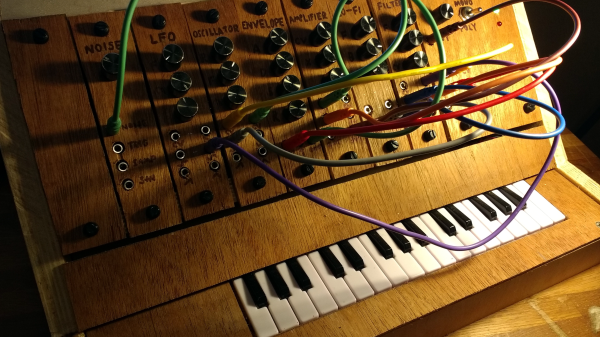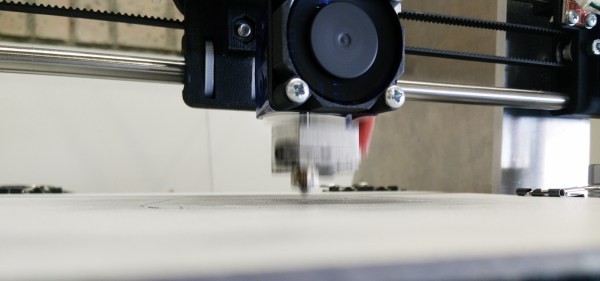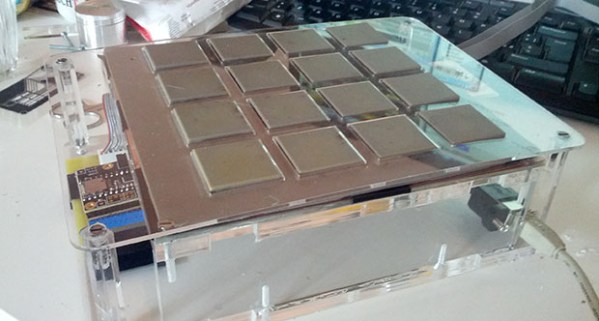[Matt Bradshaw]’s entry in the Hackaday Prize is Polymod, a modular digital synthesizer which combines the modularity of an analog synth with the power of a digital synth. Each module (LFO, Envelope Generator, Amplifier, etc.) are connected with audio cables to others and the result is processed digitally to create music.
The synth is built with a toy keyboard with each key having a tactile switch underneath it, contained inside a wooden case upcycled from a bookshelf found on the street. Each module is a series of potentiometers and I/O jacks with a wooden faceplate. The modules are connected to sockets on the main board and are held in place with thumbscrews so that the modules can be easily switched out. Each module can be connected to others using audio cables, the same way modular analog synths are connected.
The main board contains a Teensy 3.6 and a Teensy Audio Adapter creates the audio for the synth. Software that [Matt] wrote runs on the Teensy and allows the digital synthesizer to run in either monophonic or polyphonic modes. In polyphonic mode, the software creates digital copies of each module to allow the playing of chords. The Teensy scans up to eight module sockets and for each module that it finds, it reads the potentiometer value as well as the status of the I/O jacks. The keyboard buttons are converted to a control voltage which can be sent to any of the modules to create a melody.
[Matt] has created a great synth that combines benefits of both analog and digital synths together and the result is an inexpensive modular synth that can create some really cool sounds. Check out the videos after the break. In the meantime, take a look at this mess of wires and this article on a slew of open-source synthesizers.
Continue reading “The Polyphonic Analog/Digital Synth Project”













